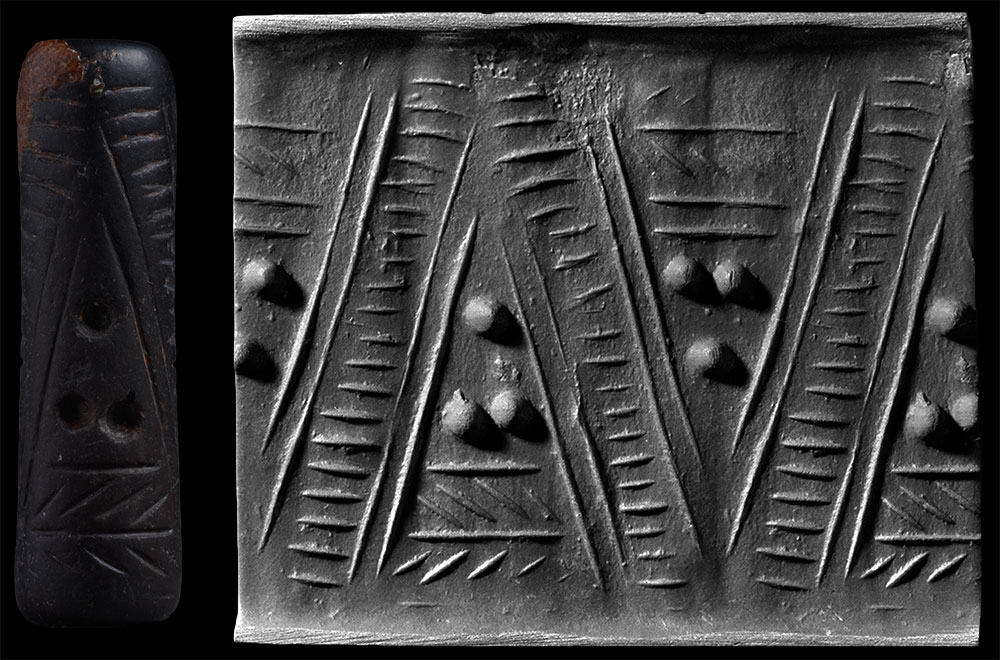Morganmobile: In Disguise
The meaning of the design carved on this cylinder seal remains unknown. It comes from a group of seals carved with geometric and—to today’s eye—abstract designs, rather than the figural or narrative scenes more typical of this early period. All of these enigmatic seals feature variations on the elements seen here. The motifs surely conveyed meaning; carving was a labor-intensive art and the stone itself was a valuable raw material, imported to the Mesopotamian flood plain. If, as is speculated, the designs are derived from weaving and mat plaiting, then each pattern might identify an individual potter or weaver—or indeed a clan, like the tartan patterns of Scotland. Whatever the meaning, the code has yet to be cracked.
Ancient cylinder seal with modern impression, Zig-Zag ‘Ladder’ Patterns, Mesopotamia, Late Uruk/Jamdat Nasr period (3500–2900 b.c.). Black serpentine, overall 1 7/8 x 9/16 in. (4.8 x 1.4 cm.), Morgan Seal 35. Acquired by Pierpont Morgan sometime between 1885 and 1908.
